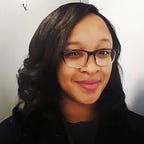New York City needs a database for reentry services. I want to build it.
As part of my practicum for the Social Journalism program CUNY J-School, I am developing a product to be a solution for a specific community. If you’ve read my posts before, you know that this community is the formerly incarcerated, specifically formerly incarcerated women.
When I embarked on engaging with this community, I was starry eyed as I donned my cape as a social justice warrior. But it wasn’t until the work began that I realized I really needed to listen to my community instead of interjecting my beliefs of what they need onto them.
I started wanting to focus on the formerly incarcerated and provide entrepreneurial solutions for the issue of finding employment with a record.
I interviewed Coss Marte, a formerly incarcerated man who is now the founder and CEO of ConBody gym; a very popular gym, even with a location in Saks Fifth Avenue. Not only does ConBody employ formerly incarcerated men and women, Marte developed a program where he goes inside of prisons to train currently incarcerated people to become personal trainers so that he can hire them upon release.
I profiled Mark Graham, another formerly incarcerated man who founded The Redemption Center in Bedford Stuyvesant, Brooklyn. The Redemption Center just celebrated its 10th year anniversary of providing transitional housing for men returning home from prison.
I felt like they embodied what I wanted to highlight in my work. Not only were they providing for themselves on their own terms, they were helping the communities from which they came. But throughout my research and reporting I felt this topic was saturated. I didn’t know what new solutions I could provide, because so many are out there. There are plenty of programs and organizations that encourage and promote entrepreneurship among the formerly incarcerated.
However, it wasn’t until I connected and spoke with Kathy Morse that I realized most of these solutions are geared towards men.
Kathy Morse, is a formerly incarcerated woman who has had a successful reentry. She was imprisoned on embezzlement charges, and came home to a pretty stable life upon release. While she didn’t need to rely on prison programs for successful reentry, she knows that they are lacking, especially for women, and how necessary they are.
After speaking with Morse, I became more intrigued with the notion that women are often left out of the conversation of reentry and criminal justice reform overall. More recently, light has been shone on this shortcoming but there is still plenty of work to be done.
But from my research and discussions with other formerly incarcerated people, as someone who is not formerly incarcerated, I should not try to insert myself on the frontline of this work.
So I had to think, what can I offer to this community?
One thing I found interesting throughout my time working with this community is that the resources are available, but they are scattered. For New York City, there is not one central location for information on various programs, organizations or housing options in one place. Or so I thought.
It turns out New York Public Library publishes an annual directory book called Connections. This is a comprehensive compilation of all resources in New York City, most are specifically dedicated to reentry, some are open to everyone.
Connections is a hard copy, paperback book, with limited prints available. While these are able to be inside prisons as a resource for incarcerated people, it could also serve as a resource for friends, family members and other people looking to aide someone who may be released from prison soon. However, most people may not be able to access or even know about this book.
This is the problem I wanted to solve.
My product started out as a reentry roadmap of sorts. It was an online platform where users selected different options that fit their criteria that yielded results. Take a look at the path below:
Get started:
Let’s say the person chose housing.
They would then chose a gender: female.
Results yielded:
After creating this prototype I felt there could be a more efficient process. So I tapped into my background as a real estate agent.
What if people could curate customized lists of resources, based on their desires and other criteria? Like one would do when searching for an apartment.
Instead of choosing “laundry in building” or “pets allowed,” one could choose “family lawyer,” “substance abuse programs,” or “employment options.”
The product will be called “On Your Own Reentry” because, while the organizations and resources aid in successful transition, people are finding these places on their own. Which, I think, gives a sense of independence.
Unfortunately, due to the lack of access to technology in prisons, my product would be people for people already released, as well as community members looking help people who are still incarcerated.
For this product reach the intended community, I would partner with nonprofits already doing the work of reentry, such as The Fortune Society, Hour Children, The Osborne Association, among others. This may be a challenge. Because nonprofits are held to certain standards, partnering may not be as easy as I think.
While I will be working with nonprofits, On Your Own Reentry will need to generate revenue. For that, I considered options of advertising and memberships for nonprofits. But I’m not sure what the incentive would be.
While it feels like I've done a lot of work thus far, I’m still at the beginning. The next step is to gain insight on user experience through focus groups with formerly incarcerated people, their loved ones, or anyone who helps them gain access to resources and implement any feedback.
I’ve developed a virtual focus group, where you can view the whole prototype and leave feedback.
